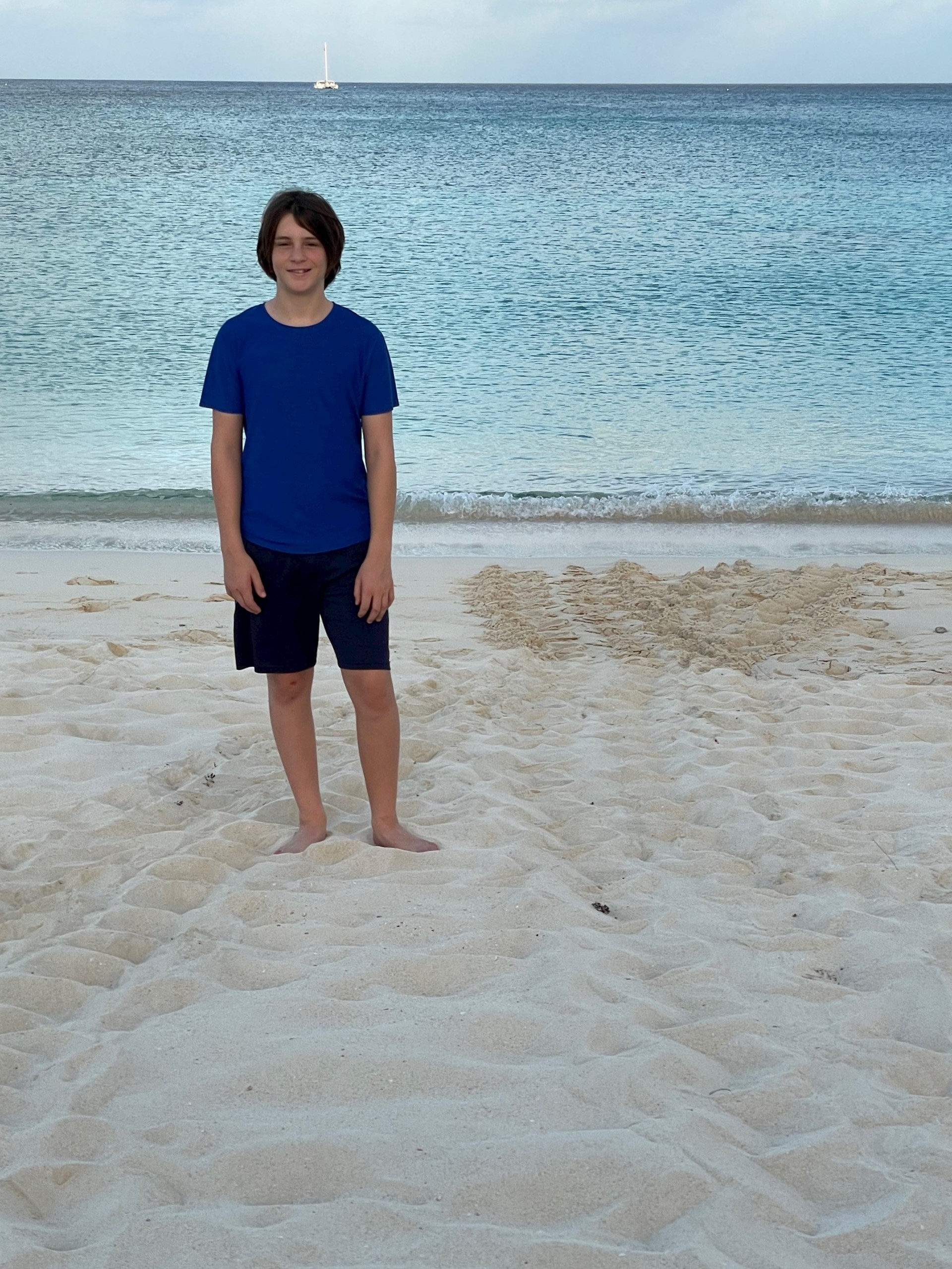
Every year between May and November, volunteers comb the local beaches in the early hours of the morning, searching for turtle tracks in support of the Department of Environment’s turtle nest monitoring programme.
For several years, Dart Senior Design Manager Carmen Damaso-Doucette has organised a team of her coworkers to take part, signing up volunteers to walk the section of Seven Mile Beach between Kimpton Seafire Resort + Spa and the Avalon condominiums.
Jenni Huys, senior vice president middle office at Dart, took part for the first time this year.
“Turtle monitoring always caught my eye, and I was looking for a volunteer opportunity to do with my 13-year-old son,” she said. “We started monitoring on 4 May and it only took three weeks until we found our first tracks. It was an extraordinary experience and felt like we found buried treasure.”
The tracks were from a "false crawl attempt" when a turtle attempts to lay but does not deposit her eggs.
“Just seeing the tracks instilled a connection to our Cayman ecosystem and we combined the monitoring with cleaning up garbage along the beach so that the turtles had a clean place to lay eggs,” Huys said.
Damaso-Doucette said the response from staff was exceptional this year.
“The schedule was almost 100% filled up early on,” she said. “The Department of Environment only expected us to go twice per week and we had at least one person covering every day of the week.”
Department of Environment Research Officer and Sea Turtle Programme Manager Dr Jane Hardwick said the monitoring programme now has more than 100 volunteers across all three islands.
“The level of commitment from the volunteers has been fantastic and we cannot thank them enough for their time," she said. "They make such a huge difference to the programme."
In addition to reporting nesting activity, Hardwick said volunteers are also trained to report on any potential threats, such as heavy machinery on nesting beaches, so the Department can respond accordingly.
“The programme encourages people to learn about sea turtle ecology, such as which species nest at certain times of year, how frequently they return to Cayman waters, which are residents here, the nest incubation times and what to look for after a hatch has occurred," Hardwick said. "This increases appreciation for the species and the precious natural environment here in the Cayman Islands."
Beyond turtle nesting season, there are several ways the community can protect and support sea turtles and other marine species, including: installing turtle-friendly lighting on beachfront developments; disposing of fishing line and other plastic debris properly; complying with local regulations on coastal development setbacks; and ensuring any turtle meat consumed is from legal, farmed sources.
“The wild population is critically small and will be threatened with extinction if illegal take continues,” Hardwick said. “Last but not least, an important action you can take is to educate yourself and teach friends and others about how they can help protect sea turtles and why it is important to do so.”
This article appears in the November 2021 print edition of the Camana Bay Times.
In other news